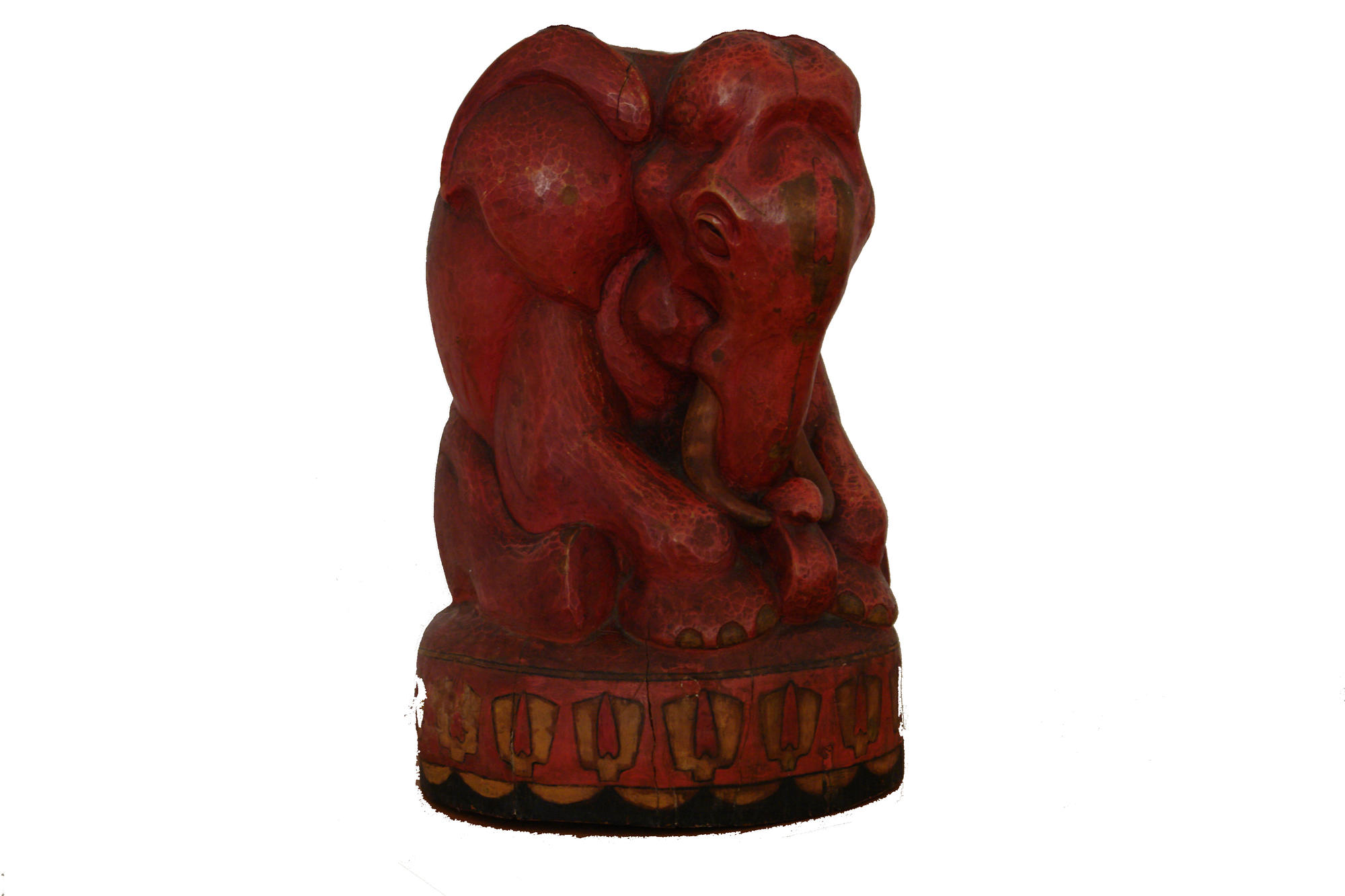The work of Vasily Vatagin (1883-1969) is large-scale and diverse. He was a painter, graphic artist and sculptor of the animalistic genre. At the same time, sculpture occupies a significant place in his artistic heritage. He studied art with K. Yuona, and turned to work with such sculptural materials as stone, wood, terracotta and majolica on his own. He had a Ph.D. in zoology and served as a staff member at the Darwin Museum, which also houses his work. The first wooden sculptures of Vatagin were created in the 1910s, and they showed his mastery of material processing, as well as the ability to accurately reproduce the appearance of an animal. He tried to avoid repetition of images, so each object is unique. A significant part of his wooden sculptures is in the State Tretyakov Gallery.
The peculiarity of Vatagin’s artistic method was that he did not change the clay model into stone or wood. Having conceived a sculpture, he created a small model, then he projected two profiles, the front and rear of this model, after which he chopped a blank along the profiles.
The vast collection of works by Vasily Vatagin in the Tarusa Art Gallery started since 1914, when he finally settled in this town, and many of his works were created here.
The sculpture “The Red Elephant” (1915) from the collection of the Tarusa Art Gallery was created after Vatagin’s trip to India and Ceylon in 1913–1914. The elephant was one of his favorite images, which he actively reproduced both in graphics and in sculpture. The sculptural image, carved from a stump of wood, is designed for all-round visibility and is carefully worked out from all sides. An unnatural pose for an elephant was specially chosen by the master. Thus he revealed all the plastic possibilities of working with wood, and had the opportunity to literally sculpt every detail.
The elephant is an animal revered in India. Often its images were used to decorate temples and sanctuaries. In the East, it is a symbol of wisdom, stability, and strength. The rich coloring of the combination of red and yellow is also used here for a reason. Red ocher color is the symbol of purity and energy, and is often the color of sacred buildings in India (the domes of the Lakshmi-Narayan temple in Delhi, for example). At the same time, such bright colors give this sculpture a decorative character, which is enhanced by the ornament on the pedestal.
The peculiarity of Vatagin’s artistic method was that he did not change the clay model into stone or wood. Having conceived a sculpture, he created a small model, then he projected two profiles, the front and rear of this model, after which he chopped a blank along the profiles.
The vast collection of works by Vasily Vatagin in the Tarusa Art Gallery started since 1914, when he finally settled in this town, and many of his works were created here.
The sculpture “The Red Elephant” (1915) from the collection of the Tarusa Art Gallery was created after Vatagin’s trip to India and Ceylon in 1913–1914. The elephant was one of his favorite images, which he actively reproduced both in graphics and in sculpture. The sculptural image, carved from a stump of wood, is designed for all-round visibility and is carefully worked out from all sides. An unnatural pose for an elephant was specially chosen by the master. Thus he revealed all the plastic possibilities of working with wood, and had the opportunity to literally sculpt every detail.
The elephant is an animal revered in India. Often its images were used to decorate temples and sanctuaries. In the East, it is a symbol of wisdom, stability, and strength. The rich coloring of the combination of red and yellow is also used here for a reason. Red ocher color is the symbol of purity and energy, and is often the color of sacred buildings in India (the domes of the Lakshmi-Narayan temple in Delhi, for example). At the same time, such bright colors give this sculpture a decorative character, which is enhanced by the ornament on the pedestal.




